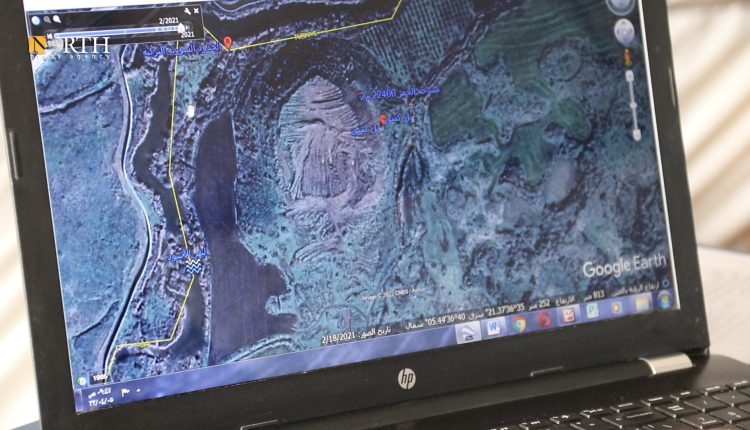Turkish continues violating archaeological sites in Syria’s Afrin
ALEPPO COUNTRYSIDE, Syria (North Press) – Turkey along with the Turkish-backed armed Syrian opposition factions continued the violations of the cultural heritage and archaeological monuments in the region of Afrin, in the northern countryside of Aleppo, co-chair of Afrin Antiquities Directorate said on Tuesday.
Testimonies obtained by the Directorate from within the region, and the visual documents that they obtain via Google Earth, confirm that new archaeological sites, which have been unknown to the Directorate of Antiquities of both the Syrian government and the former Autonomous Administration, have been subjected to vandalism and excavation, said co-chair of Afrin Antiquities Directorate, Salah Sino.
Sino, a researcher and archaeologist who graduated from Damascus University in 2001, stated that they have documented a site where ancient classical tombs existed, which they believe date back to the Roman or Byzantine eras, according to the main entrances to the cemetery.
The new site is located north of the village of Miskeh Fawqani in the countryside of Jindires district, and as a result of the excessive logging of forest in the area, Turkey and the opposition factions have discovered it.
Sino pointed out that the cemeteries were violated, and the buried belongings accompanying the skeletons of the dead were stolen and looted.
He said that they relied mainly in their documentation on satellite images during the years 2021-2022.
“The reason behind the escalation of violations by Turkey and the affiliated factions is that the Turkish state has banned the entry of media outlets and the UN expeditions to the area,” Sino noted.
“As well as the International Commission of Inquiry in its reports noted that the security chaos the country witnesses prevents its investigators from entering the region to examine the crimes that are taking place on the ground,” he added.
“The images show vandalism and violation committed against large parts of the archaeological sites in Rajo district especially the hills located on the Syrian-Turkish border as Tel Kishor, Tel Habashko and the archaeological site of Albeski, which were discovered in 2015,” Sino said.
Satellite images in 2019 showed that the violated and excavated space in Tel Kishor archeological site was estimated at 25,750 m², while the new satellite images indicated that the excavation process is well under way.
“We notice that this area has increased greatly and reached 38,100 m²,” Sino noted.
The violations and excavation that the archaeological site of Tel Habashko was subjected to in 2021 covered an area of 11,500 m², but it has reached 24,000 m² recently and included the entire hill. Excavations also extended to neighboring lands which are called the low city in archeology, according to Sino.
Since Turkey took control over Afrin in 2018, the Directorate documented the vandalism of 69 archaeological sites and 31 .
The artifacts were stolen from all the sites and sold in the black market after being smuggled through Turkey to Europe, according to Sino.
Sino held the international community responsible for the destruction and looting of archaeological sites in Afrin, noting that international conventions and treaties and international law provided many provisions to protect antiquities and human cultural heritage during armed conflicts.
“But this fell on deaf ears in Turkey,” which encouraged it along with its affiliated factions, to escalate violations in general and violations of cultural heritage in particular.
He noted that Turkey and the armed factions were targeting everything related to the human cultural heritage in Afrin in an attempt to write a new history for the region through changing the names of towns, villages and squares and replacing them with Turkish names.

